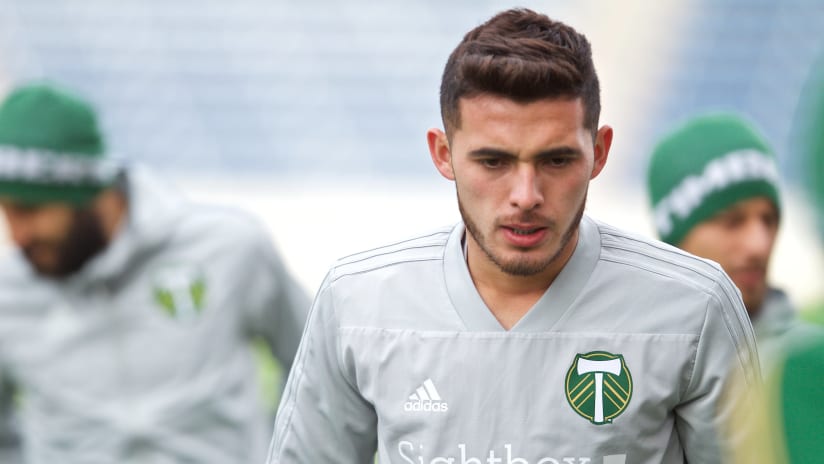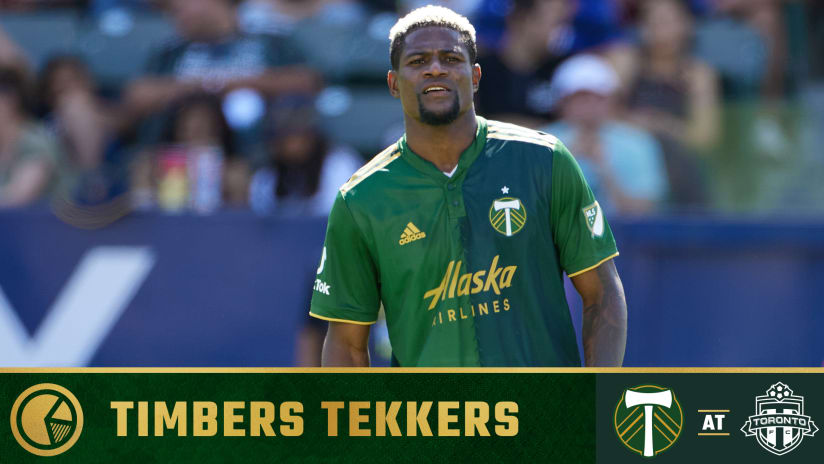Through one month of the Major League Soccer season, only seven teenagers have played at least one minute in a team’s midfield. Four of those players have started a game. Only three have logged over 100 minutes.
That puts Portland Timbers’ midfielder Cristhian Paredes in select company, along one player who is already winning U.S. men’s national team acclaim (New York’s Tyler Adams) and another who has stood out for the U.S. under-17s (D.C. United’s Chris Durkin). Among all teenage central midfielders who’ve seen time in MLS this season, Paredes leads in starts (three) and minutes played (270), thus far.
It’s too early in the 2018 season to read into those rankings. What’s most important is the company he’s keeping. It’s becoming increasingly difficult to win playing time in MLS. To do so as a teenager in central midfield appears to be even harder.
<strong>Player</strong> |
<strong>Games Played</strong> |
<strong>Games Started</strong> |
<strong>Minutes Played</strong> |
<strong>Goals</strong> |
<strong>Assists</strong> |
<strong>Passes</strong> |
<strong>Passing Accuracy</strong> |
<strong>Tackles</strong> |
<strong>Interceptions</strong> |
<p>Paredes, Cristhian</p> |
<p align="right">4</p> |
<p align="right">3</p> |
<p align="right">270</p> |
<p align="right">0</p> |
<p align="right">0</p> |
<p align="right">114</p> |
<p align="right">82.46</p> |
<p align="right">5</p> |
<p align="right">3</p> |
<p>Durkin, Christopher</p> |
<p align="right">5</p> |
<p align="right">2</p> |
<p align="right">227</p> |
<p align="right">0</p> |
<p align="right">0</p> |
<p align="right">111</p> |
<p align="right">81.08</p> |
<p align="right">6</p> |
<p align="right">3</p> |
<p>Adams, Tyler</p> |
<p align="right">2</p> |
<p align="right">1</p> |
<p align="right">116</p> |
<p align="right">0</p> |
<p align="right">0</p> |
<p align="right">69</p> |
<p align="right">78.26</p> |
<p align="right">3</p> |
<p align="right">2</p> |
<p>Fontana, Anthony</p> |
<p align="right">3</p> |
<p align="right">1</p> |
<p align="right">86</p> |
<p align="right">1</p> |
<p align="right">0</p> |
<p align="right">39</p> |
<p align="right">69.23</p> |
<p align="right">0</p> |
<p align="right">4</p> |
<p>Colman, Josué</p> |
<p align="right">2</p> |
<p align="right">0</p> |
<p align="right">59</p> |
<p align="right">1</p> |
<p align="right">0</p> |
<p align="right">21</p> |
<p align="right">76.19</p> |
<p align="right">1</p> |
<p align="right">0</p> |
<p>Pomykal, Paxton</p> |
<p align="right">1</p> |
<p align="right">0</p> |
<p align="right">22</p> |
<p align="right">0</p> |
<p align="right">0</p> |
<p align="right">13</p> |
<p align="right">92.31</p> |
<p align="right">2</p> |
<p align="right">0</p> |
<p>Carleton, Andrew</p> |
<p align="right">2</p> |
<p align="right">0</p> |
<p align="right">13</p> |
<p align="right">0</p> |
<p align="right">1</p> |
<p align="right">11</p> |
<p align="right">72.73</p> |
<p align="right">0</p> |
<p align="right">0</p> |
This wasn’t necessarily the plan for Paredes when he was signed from Club América at the beginning of February, even if the Parguayan youth international had shown flashes of this level during this time for his national team, as well as the appearances he made for América in Copa MX. But having never broken into América’s Liga MX squad, there were questions about how quickly Paredes would get up to speed in MLS. Even if the league wasn't beyond him, his signing one month before the Timbers' first game projected his contributions for later in the season.
Preseason also said as much, with Paredes seeing few minutes with Giovanni Savarese’s first XI while the Timbers were in Arizona. Come time to kick off the regular season, though, Paredes was starting against the LA Galaxy, and while his name wasn’t in the lineup for the team’s next game at the New York Red Bulls, the shift to a new formation, the 4-3-2-1, has seen Paredes start against both Dallas and Chicago.
Within that setup, Paredes has been more than a young set of legs. His passing percentage, 82.46 percent, isn’t at Diego Chara-esque levels, but it is the highest among Timbers who’ve appeared in all four regular-season games. The raw tackle and interception numbers speak to Paredes’ defensive contribution, while his role often as the fourth man into the attack – the person who helped augment the Timbers’ numbers on the goal against FC Dallas as well as the second score against the Chicago Fire – show he has a role to play getting forward.
Paredes has also had moments that stood out for different reasons, like his inability to get out and contest Bastian Schweinsteiger’s cross ahead of the Fire’s second Saturday goal, but the fact that moment is an exception speaks to what the 19-year-old has contributed thus far.
What stands out about Paredes’ actions, above, over the last two games is their distribution, both across the length and width of the pitch. On the left are Paredes’ actions two weeks ago against Dallas – everything that Opta tracks, charted across a field. On the right are the same actions except from Saturday’s game in Chicago. At both ends of the park, he’s finding a way to be impactful, and while the Dallas game saw him play predominantly on the left side of the field, against Chicago, he wielded more influence in the middle, as well as higher up the field.
Stylistically, Paredes’ early play is reminiscent of another player who, just last year, had a central-midfield breakthrough. Back then, New York City FC’s Yangel Herrera quickly became known as the player who displaced the legendary Andrea Pirlo, but he was also somebody who, in January 2017, earned a contract with Manchester City as a 19-year-old. That summer, he featured for Venezuela at the Copa America Centenario and, to date, has made six appearances for his national team. Although Herrera and Paredes have noticeable differences in their game (Herrera projects to be the more prolific passer, while Paredes may prove to be more impactful in opposing penalties areas), the breadth of their games is similar. Both are all-around, central midfielders who find a way to stay to stay involved in all phases, at all levels of the field.
Here are Herrera’s last two games: visiting New England on March 24 (left), and at San Jose on March 31 (right). Herrera has kept to the left side of the field in NYCFC’s 4-3-3, so his actions are more concentrated than Paredes’. In both magnitude and area, though, his profile has looked similar to his younger counterparts’, if reflecting an additional year of professional experience.
We shouldn’t go too far to stretch the Herrera and Paredes parallels, but in the Venezuelan’s path, there are lessons we can apply to Portland’s new box-to-box talent. Although Herrera arrived in MLS at a young age, that inexperience didn’t deter him from contributing to a playoff squad, and while his numbers weren’t prolific – one goal, two assists, 81.8 percent passing in 1403 minutes, last year – his all-around play helped solidify Patrick Vieira’s first group.
Paredes has only finished his first month in MLS, but given how few teenagers are able to contribute in the middle, he is already ahead of the curve. And if one prominent example from last season is any indication, the young Paraguayan may yet have more to offer this season.












